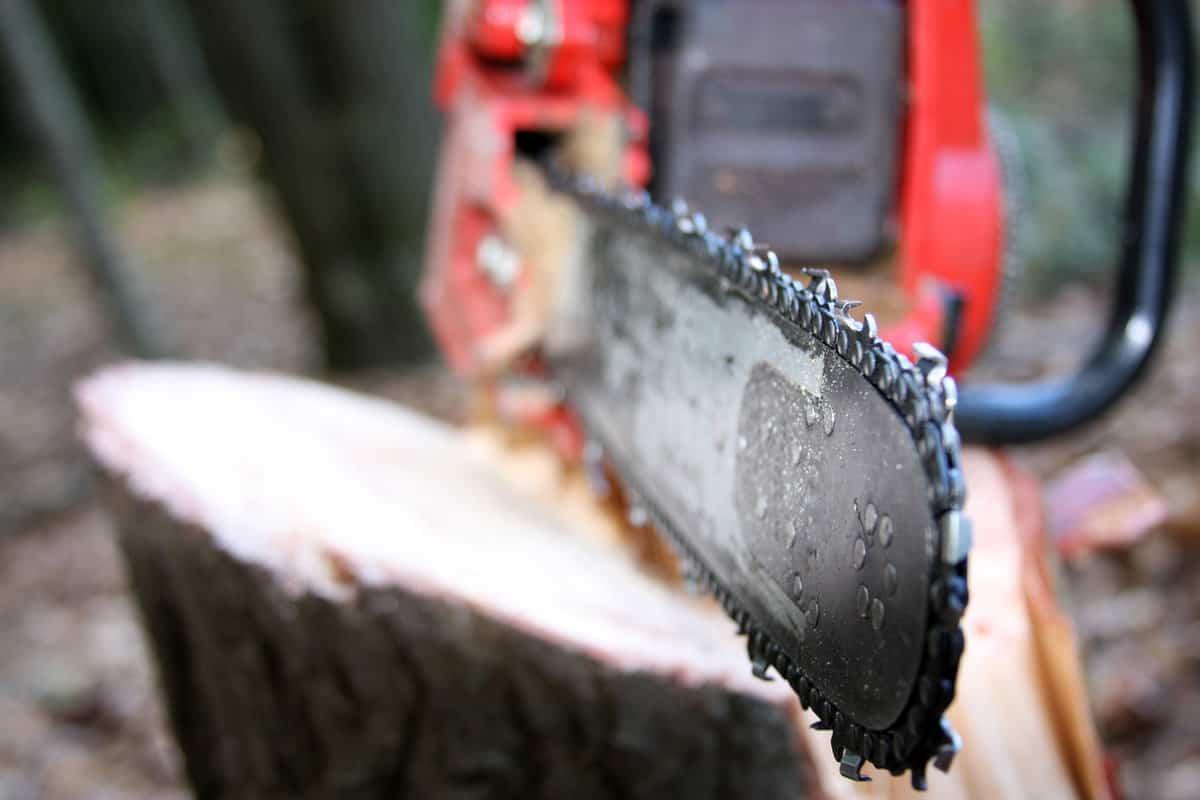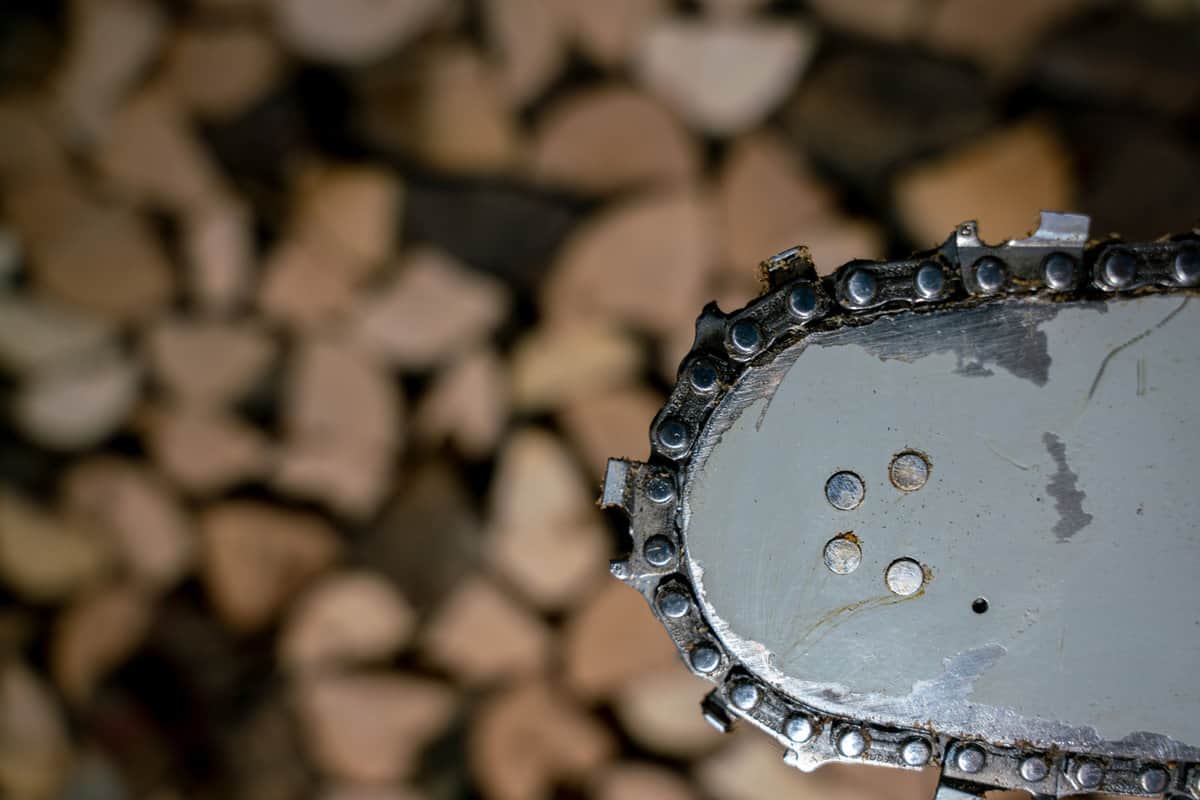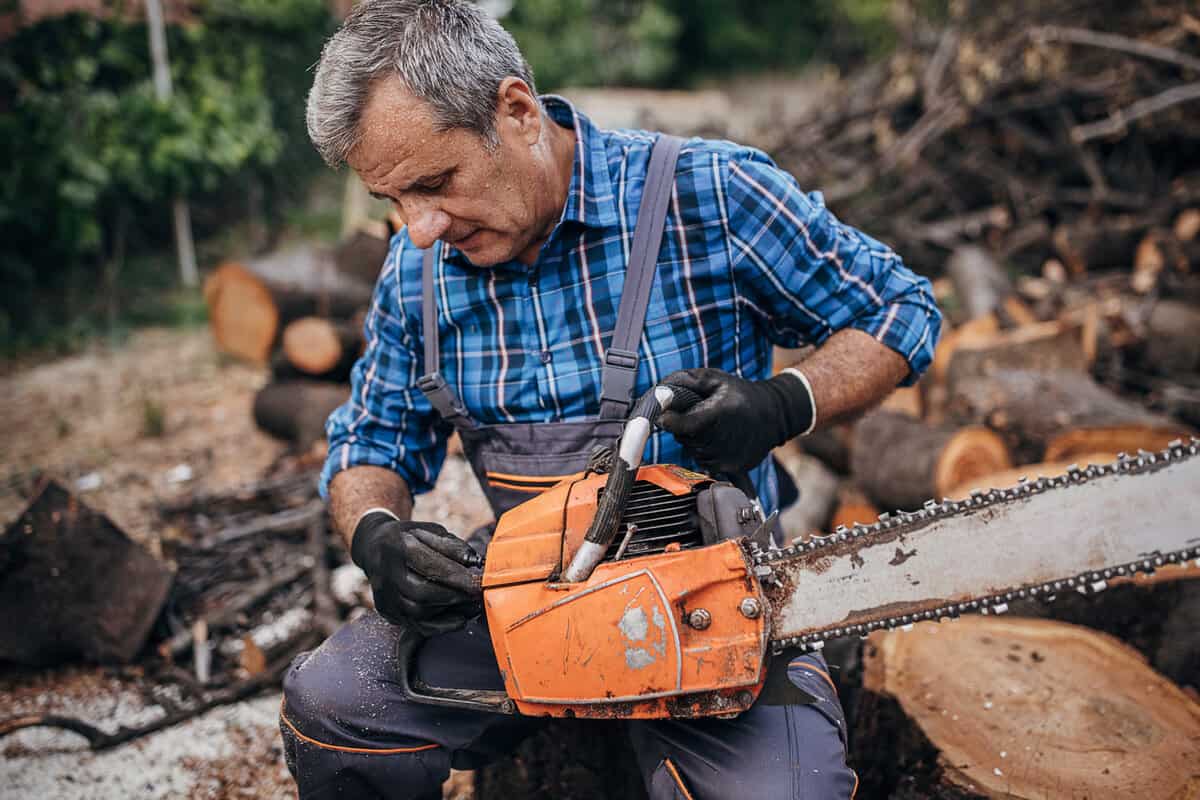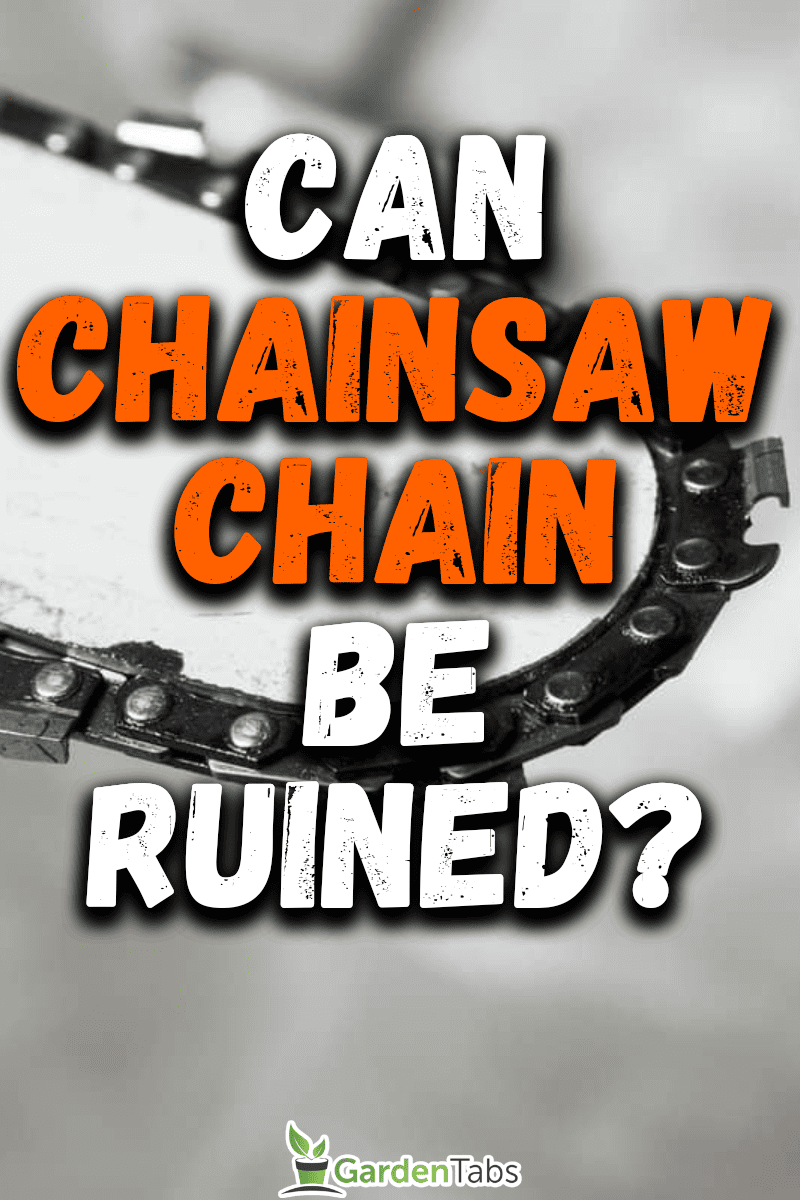A chainsaw chain is what drives the blade to rotate and cuts wood, so you want to take care of it properly. Unfortunately, it doesn't matter how careful you are, the chain can be ruined. We have researched the possible causes of why chainsaw chains are damaged so you can learn what to do to prevent this from happening.
Yes, you can damage a chainsaw chain if you are using it improperly. Avoid hitting the dirt, as it will bog down the saw and it will run harder than it should. The best advice is to use the tool for what it was designed for and for the purpose for which it was made, cutting wood.
We all have used chainsaws at one time or another. Now, as the tool gets older, the chain's quality worsens. We'll tell you how to care for your chainsaw chain in order to keep the chain working as long as possible. We'll also share with you the signs you need to be aware of when your chainsaw asks for a new chain so keep reading!

What Is A Chainsaw Chain?
A chainsaw chain is basically a continuous steel strip with teeth along its edges. Each chain link has a dedicated saw tooth of its own. It's like a bicycle chain with teeth on it.
A chainsaw chain is an indispensable part of a chainsaw. It transfers the power of the motor to the saw blade. If the chain is loose, the power of the motor is transferred inefficiently, causing the motor to run harder than it should.

What Ruins A Chainsaw Chain?
Chainsaw chains are vital components of your chainsaw. They are the links that connect your blade and sprocket. When it comes to chains, you need to know what causes the chain to break and how to fix it. Here are the possible problems that can ruin your chainsaw chain:
Improper Chain Tension
You need to keep the chain tight. If the chain is loose, it will eventually strip. To avoid this, tighten the bolts holding the chain to the sprocket. On the other hand, overtightening may cause the chain not to turn or if it does, potentially snap the chain while in operation due to overheating.
A good rule of thumb is to check the tension by pulling on the chain. If it pulls easily, it’s not tight enough. If it’s very hard to pull, it’s too tight.
You just don't tighten the chain according to gut feeling. What this means is that you need to know the right tension on your chainsaw chain. Make sure there's enough play between the chainsaw bar and chain, about a quarter inch.
You can watch the video below to see how to adjust chainsaw chain tension.
Cutting Through Dirt
A chainsaw is designed to cut wood and other material, but some of us just enjoy doing some DIY work. Whether you're building a fence, ripping down a tree, or clearing away brush, it's always fun to have a chainsaw at the ready.
But sometimes, your chainsaw will need a little bit of help. When it comes to cutting wood, dirt and other debris can get in the way and clog up the chain. This will potentially cause the chain to stretch and wear prematurely.
In addition, a stuck chain due to dirt clogging the teeth is going to slow you down and could even cause damage to the engine because of overloading.
To prevent this, you'll want to clean your saw after every use. If you have a blade guard, make sure to remove it and wash it thoroughly before storing it. Otherwise, it might end up getting clogged up too.
You can watch this guy demonstrate how hitting dirt has caused his chainsaw to have a sudden decrease in cutting efficiency in a matter of seconds:
Hitting Stones Or Any Hard Object
We've all done it at least once. It's when you cut through something hard, and you think you've screwed the blade up.
The problem is that the blade's edge gets duller when it encounters harder objects than wood. As a result, the blade won't cut as easily, and it will also require more force. This can cause the engine to overload.
How To Take Care Of Your Chainsaw Chain

A chainsaw chain is used to drive the blade that cuts wood and if you don’t take good care of it, it could break, rendering your saw useless (temporarily, at least).
The life expectancy of a chainsaw under normal use and proper maintenance is 10 years. However, this doesn't mean that you replace the chain only after that time period. If your chainsaw chain has been exposed to undesirable conditions more often than not, it will need to be replaced sooner rather than later.
But before you go to the store to buy a new chain, you should know a few important tips on how to take care of it, so it lasts as long as possible.
1. Keep The Chainsaw Clean
If you own a chainsaw, it is important that you keep your chain clean. You do not want a piece of wood to get caught in the teeth and become jammed, as this can affect the chain alignment.
Dirt and grime can easily clump and clog the chain because the oil mixes with these elements, so you will need a degreaser. Once degreased, soak it in water with ammonia before putting the chain back on.
We've all heard stories of people cutting themselves or others when they get a saw chain wrapped around their fingers. If you're a beginner or even a seasoned sawyer, it pays to be always mindful to turn the chainsaw off before doing any cleaning attempt.


Check out this all-purpose cleaner with ammonia on Amazon.
2. Lubrication Is The Key
The most important maintenance step for your chainsaw chain is lubricating it. Lubrication helps prevent rust, wear, and other issues that can affect performance.
If you've been using your chainsaw without lubricating it, you might notice problems such as a louder sound and decreased performance.
Lubrication is important not only for your chainsaw chain but to the chainsaw as a whole because it makes sure that the parts are moving smoothly and easily, which leads to less friction between the bar and the chain and less strain on the motor.


Check out this chainsaw chain lubricant on Amazon.
3. Avoid Using Stale Gas
Gasoline loses its potency over time, which means that the amount of gas available for combustion and the amount of energy released by combustion decrease.
This means your chainsaw engine will work harder than if it had fresh gas. As a result, the chainsaw chain will lose its cutting efficiency. Instead of cutting through wood, it might get stuck in the middle of the log while operating.
There is no need to worry if you plan to keep your gas for a while as long as it does not exceed three months. However, if you're planning to fill your chainsaw with gas and store it for more than three months, you can add a fuel additive to your gas tank.
Fuel additives are specifically designed to increase the longevity of gasoline.


Check out this fuel additive on Amazon.
4. Sharpen The Blades
The main reason why you should sharpen chainsaw chains is that the saw chain can become dull. If the saw chain becomes dull, it won’t cut as well.
Dull saw chains can lead to decreased cutting power, increased loading, and can even lead to chain breakage. By sharpening the chain, you are making it easier for the saw to push the chain through the wood.


Check out this chainsaw sharpener on Amazon.
When Should You Replace Your Chainsaw Chain?

A chainsaw has a lot of moving parts and if one gets damaged or worn down, you could be at risk of injury. One of these moving parts is the chainsaw chain. But how can you tell if you need to replace a chain on your chainsaw? It might sound like a simple task, but it's actually pretty important.
We have listed some telltale signs that your chainsaw chain needs replacing, as well as some tips for getting the job done right.
Missing Teeth

Chainsaws are known for being able to chew through wood with ease. But how can it efficiently chew if it has lost some of its teeth?
The teeth on the chain links are what make chainsaws effective cutting tools. The teeth are designed to hold onto the workpiece while simultaneously breaking off pieces of wood.
However, over time, the teeth will wear down. This will result in the saw chain losing its ability to bite into the wood.
If you see any missing teeth, or even cracks or chips, then you can get the chain replaced right away. In most cases, the chain will break due to metal fatigue. Metal fatigue is a weakening of the metal, usually caused by frequent vibrations. When the metal fails, the teeth on the chain wear down.
Chain Does Not Align Anymore With The Bar

Chainsaw chains are designed to have certain tolerances. You will know if the chain is not aligned with the chain bar if you notice that you have to force the chain to fit into the chain bar.
However, you may be able to successfully fit the chain snugly through the use of force, but you'll observe how hard the chainsaw engine works to finish the job. This can also result in uneven cuts.


Check out this universal chainsaw chain on Amazon.
In Closing

Just like any mechanical tool in your arsenal, a chainsaw is not immune to wear and tear. The best way to avoid chain damage is to make sure you are keeping your chainsaw chain properly maintained.
Always make sure the chainsaw won't hit the ground when cutting through wood. Dirt is a mortal enemy of your chainsaw chain so avoid contact with it at all cost!
You might also like:


